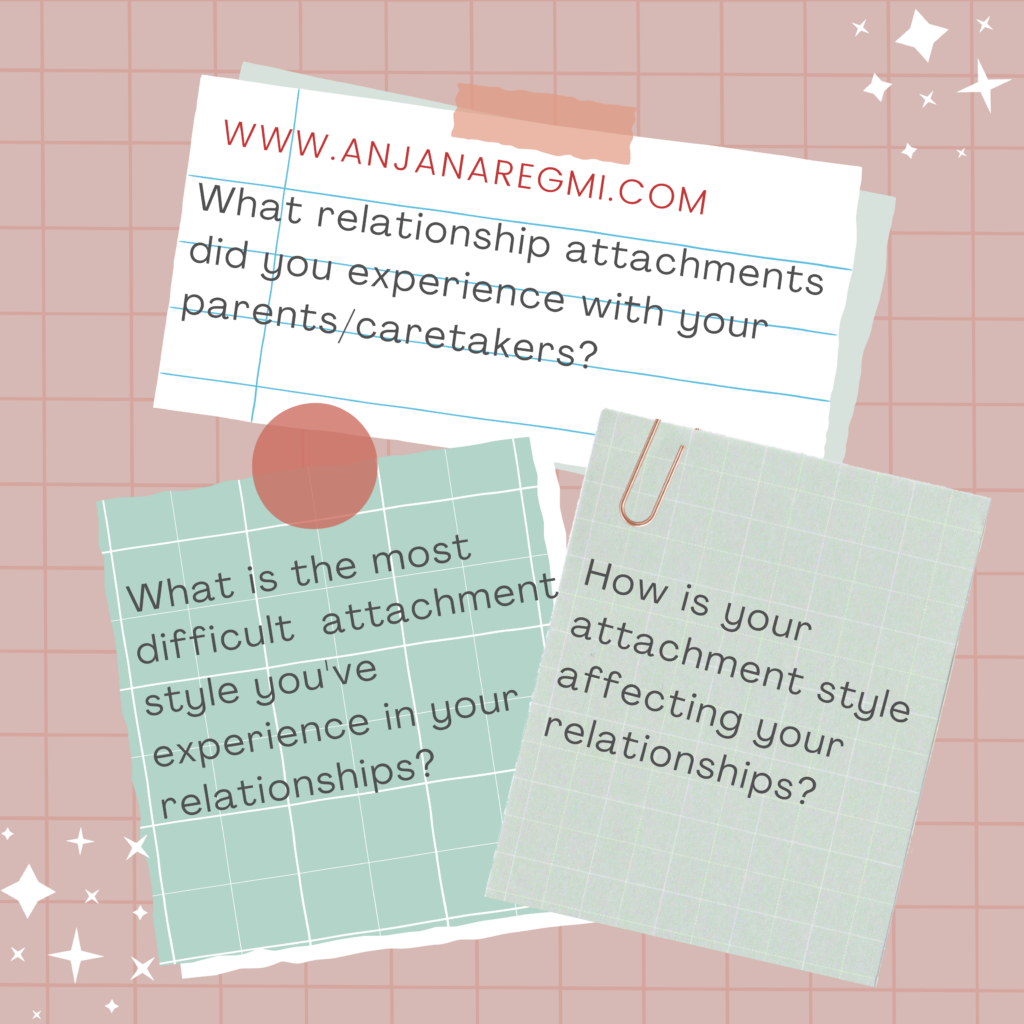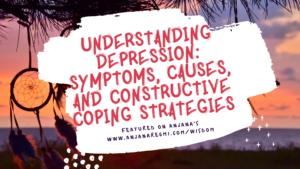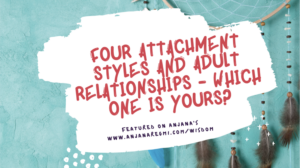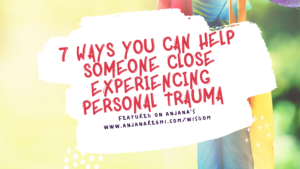
Attachment theory is one of the most influential psychological theories of the 20th century, first proposed by British psychiatrist John Bowlby in the 1950s, and has since been developed by other theorists. Attachment theory is a framework for understanding human behaviour and relationships[i]. The concept grew from Bowlby’s observations that children formed strong emotional bonds with their primary caregivers, which created a sense of security. Later theorists expanded on this concept to describe how attachment styles experienced in infancy can affect relationships and interactions throughout life.
By understanding these early emotional bonds, researchers have discovered new ways to help children create strong, healthy relationships with those around them[ii]. Attachment theory has become an important part of psychology today, helping professionals provide more effective interventions for individuals dealing with mental health issues.
Bowlby’s attachment theory posits that the infant-mother relationship is crucial for the child’s normal social and emotional development[iii]. This research has shown that attachments are important for the development of a wide range of skills, including social and emotional skills, communication skills, and problem-solving skills. However, some critics have argued that the theory is not based on grounded evidence and does not adequately explain how children develop attachment styles from the day-care environment[iv], with other caregivers, such as fathers or grandparents.
Attachment theory has been extensively studied in perinatal effects[v] that are associated with a variety of outcomes in adulthood, including relationship satisfaction, mental health, and physical health. Using attachment theory in trauma-informed relationship counselling has been fundamental in my private practice to support clients’ understanding of the relationship dynamics, why they may be experiencing difficulties, and can provide them with tools to improve communication and resolve conflict. It has helped them understand the interplay of genetic functions, why we are attracted to certain people, why we feel secure with some people and not others, and why we sometimes find it difficult to let go of relationships even when they are no longer good for us[vi].

Let’s look at four commonly discussed attachment styles and why research suggests that understanding attachment styles can help adults better understand how their childhood experiences impact their current behaviour and adult relationships[vi], [vii], [viii]. The four distinct attachment styles that arise from this theory are secure, anxious-preoccupied, dismissive-avoidant, and fearful-avoidant.
1. Secure Attachment Style
Secure attachment style is a type of bond between two people that helps to foster emotional security and connection. It is characterised by warm, reciprocal relationships in which one person can depend on the other for comfort, support, protection, and guidance as needed and provide the same to the other. In child-adult relationships in parenting, securely attached children feel emotionally safe in their relationships with adults, knowing that they can rely on them in times of need. They have a positive view of themselves and trust that their needs will be met by the adults in their lives.
It is important for children to develop secure attachments with adults as this helps them to feel safe and connected, which can lead to better mental health outcomes later in life. Secure attachment style promotes healthy communication without a fear of judgement and connection between two people, allowing them to develop positive relationships that can last a lifetime.
Securely attached individuals are comfortable with intimacy and dependency. They have a strong sense of self-worth and confidence in their relationships, which allows them to rely on others when they need support. It helps individuals to learn to trust and depend on others in a healthier way by learning important life skills such as conflict resolution, problem-solving, communication, and empathy.
Secure attachment helps strengthen relationships because it encourages individuals to feel comfortable expressing intimacy and dependency. With a strong sense of self-worth and confidence in their relationship, those with secure attachment styles are more able to rely on their partners for support and become available to do the same. This creates an atmosphere of trust, which builds stronger emotional connections between partners that can last over time.
Additionally, feeling secure in your relationship allows each partner to approach the other with respect and open-mindedness rather than fear or doubt, leading to healthy communication and resolution of conflicts without lasting damage to the bond. Securely attached couples also have higher levels of satisfaction due to increased feeling of security from being accepted by one another unconditionally. Overall, secure attachment styles offer couples a foundation for building stronger relationships through mutual acceptance and understanding.

2. Anxious-preoccupied Attachment Style
Anxious-preoccupied attachment style is characterised by a strong desire for closeness and intimacy, while at the same time exhibiting a fear of being abandoned or rejected. People with this attachment style often feel insecure and uncertain in their relationship, struggling to trust in the other person’s feelings or intentions. They may have difficulty regulating their own emotions, often feeling overwhelmed by strong feelings of fear, worry or anger. At the same time, they can be clingy and overly dependent in their relationships, seeking constant reassurance that things are going well.
People with an anxious-preoccupied attachment style may also have trouble resolving conflict in their relationships. They typically get very involved in disagreements and have difficulty staying calm and objective during arguments. This can lead to frequent conflict and alienation from others, as their behaviour can be seen as overly emotional or dramatic.
When it comes to self-care, people with an anxious-preoccupied attachment style may find it difficult to take care of themselves in healthy ways. They often put the needs of others before their own, leading to feelings of resentment or frustration. Additionally, they may struggle with low self-esteem and worry excessively about being judged by others. It is important for people with anxious-preoccupied attachment styles to learn healthy coping mechanisms to manage their emotions, build confidence and maintain meaningful relationships.
An anxious-preoccupied attachment style can have a variety of possible root causes. Some may be environmental, while others are related to one’s upbringing or genetics. Understanding the underlying causes of this type of attachment style is important as it can lead to better approaches for treatment and management.
- Person’s childhood experiences: Experiences such as prolonged separation from or lack of responsiveness by caretakers can lead to feelings of insecurity and a need for excessive closeness in relationships. Additionally, those who experienced harsh discipline, physical neglect, or psychological abuse are more likely to develop an anxious-preoccupied attachment style.
- Genetic influence: Research suggests that predisposition to anxious-preoccupied attachment style may be inherited from parents or other family members who also experience this style of attachment. Furthermore, genetics may play a role in how individuals process social and interpersonal situations, which can affect their ability to form secure attachments in relationships.
- Environmental factors: This can include chaotic or unpredictable environments, such as unstable home life due to divorce or frequent moves. It can also include living with chronic stress or living in communities that have limited resources or lack of support systems.
Understanding the underlying causes of an anxious-preoccupied attachment style is key to developing effective treatment plans that address the needs of individuals who experience this type of attachment issues. By recognising potential root causes, therapists can work with clients to create strategies for managing their anxiety and forming healthier relationships.
Therapy can help those with anxious-preoccupied attachment styles to develop better communication skills, regulate their emotions and become more secure in themselves and their relationships. Through therapy, individuals can learn how to set healthy boundaries and find balance between caring for others and taking care of themselves. Ultimately, understanding the underlying sources of insecurity and learning how to manage feelings of fear or worry can help to create more secure and fulfilling relationships.

3. Dismissive-avoidant Attachment Style
Dismissive-avoidant attachment is a type of insecure attachment style characterised by a desire to remain independent and a tendency to suppress or dismiss any need for intimacy with others. Those with this attachment style have difficulty forming meaningful and lasting relationships, as they often push away those who attempt to get close. This can be attributed to their fear of being vulnerable, as well as their internalised beliefs that they need to rely solely on themselves. They may also struggle with trusting others and forming close bonds, instead preferring to keep relationships at an arm’s length.
Dismissive-avoidant individuals are uncomfortable with dependence, but also fear rejection and abandonment. They attempt to remain independent to avoid relying on others, which can result in a lack of intimacy and meaningful relationships.
- Childhood experiences: A child’s early life experiences can shape the way they form attachments in adulthood. If a child has experienced neglect or abuse, they may become more likely to adopt an avoidant attachment style as they grow older. This is because they may be more distrustful of others and unwilling to open, which often leads to them avoiding close relationships.
- Temperament: Individuals who are naturally more independent or isolated may find it difficult to form meaningful connections with other people. As a result, they may become more likely to avoid any kind of intimate relationship.
- Influence of their environment: If an individual’s family or peers are dismissive or judgemental towards close relationships, this could lead them to adopt an avoidant attachment style. Additionally, if they are surrounded by people who value independence and self-sufficiency, this could further encourage them to distance themselves emotionally from others.
Ultimately, dismissive-avoidant attachment can be a challenging type of attachment to overcome. It is important to understand that the need for connection and intimacy is an essential part of being human and healthy relationships are worth striving for. With patience, understanding, and the right guidance from a mental health professional, it is possible to form meaningful, fulfilling relationships.

4. Fearful-avoidant Attachment Styles
Finally, fearful-avoidant attachment styles, also known as disorganised attachments, is characterised by a deep discomfort with both closeness and distance in relationships. These individuals are both fearful of intimacy and rejection. People with this style tend to oscillate between clinging on to the other person for comfort and pushing them away out of fear of being hurt or abandoned. They may become clingy, demanding and possessive, or alternatively, emotionally distant, and unavailable. Individuals with fearful-avoidant attachment may also have difficulty trusting others and struggle to open emotionally. They are prone to depression and anxiety due to their fear of being rejected or hurt by those they care about. They tend to be distrustful of their partners and may have difficulty forming meaningful connections.
While this type of attachment can be challenging, it is important to remember that it is not a permanent state and that with the right help, individuals can learn to overcome their fears and build healthy relationships.
Three common reasons why people develop fearful-avoidant attachment styles are:
- Unresolved childhood trauma: Exposure to traumatic experiences, such as physical or sexual abuse, violence, neglect, or abandonment in early childhood can lead to the development of a fearful-avoidant attachment style as one attempts to cope with these negative emotions.
- Unavailable parents: Growing up with emotionally unavailable parents can cause an individual to develop a fearful-avoidant attachment style. If the parents are not available, consistent, or responsive enough to meet the child’s emotional needs, this can lead to feeling insecure, anxious, and distrusting of others.
- Negative life experiences: A series of negative life events can also cause an individual to develop a fearful-avoidant attachment style. These may include bullying, traumatic relationships, or any other type of negative experience that causes the individual to distrust people and be afraid of forming meaningful connections. This can lead to feeling unsafe in relationships.
These experiences can result in an individual becoming fearful and avoidant when it comes to forming close personal connections with others. As a result, they may struggle to form lasting relationships and have difficulty trusting others. Understanding the underlying causes of fearful-avoidant attachment styles is important in order to provide effective treatment and enable individuals to form meaningful connections with others.

Bowlby’s Attachment Theory has been studied extensively in recent years, with research providing further insight into how these attachment styles develop and interact with other aspects of life. It is important to understand how these attachment styles can affect our current relationships, as this knowledge can help us create healthier connections with the people we care about. Additionally, recognising our own style of attachment can provide insight into how we interact with others and why certain behaviours have become habitual. Through a better understanding of these attachment styles, adults may be able to better resolve conflicts and create healthier, more meaningful relationships.
Thus, attachment theory can help people understand how their early experiences can influence the way their genes are expressed. This knowledge can be empowering, as it can help people make choices that promote health and well-being. For example, parents who are aware of the importance of attachment can make choices that promote a secure attachment between themselves and their children. This, in turn, can help to ensure that their children’s genes are expressed in a way that promotes health and well-being. Eventually, forming lifelong relationships and understanding partner’s attachment needs and wants can also be easily met.
Reflective Prompts

By reflecting on your attachment styles and ones we observe in others, you can better understand how your past experiences shape your present life. This knowledge can help you heal, grow, and form healthier relationships with those around you.
PS: You know you can book a short 30-minute appointment with me, if you’re interested in finding your attachment style? Click here to book now.
References
[i] Bretherton, I. (1992). The Origins of Attachment Theory: John Bowlby and Mary Ainsworth. Developmental Psychology., 28(5), 759–775. https://doi.org/info:doi/
[ii] Von Tetzchner, S. (2019). Child and adolescent psychology typical and atypical development. Routledge. Chapter 2: Theoretical perspectives (pp. 19-38).
[iii] Bowlby, J. (1958). The nature of the child’s tie to his mother. International Journal of Psychoanalysis, 39(5), 350–373.
[iv] Duschinsky, Van Ijzendoorn, M., Foster, S., Reijman, S., & Lionetti, F. (2020). Attachment histories and futures: reply to Vicedo’s “Putting attachment in its place.” European Journal of Developmental Psychology,17(1), 138–146. https://doi.org/10.1080/17405629.2018.1502916
[v] Kanherkar, Bhatia-Dey, N., & Csoka, A. B. (2014). Epigenetics across the human lifespan. Frontiers in Cell and Developmental Biology, 2, 49–. https://doi.org/10.3389/fcell.2014.00049
[vi] Knies, Bodalski, E. A., & Flory, K. (2021). Romantic relationships in adults with ADHD: The effect of partner attachment style on relationship quality. Journal of Social and Personal Relationships, 38(1), 42–64. https://doi.org/10.1177/0265407520953898
[vii] Ainsworth, M. S., & Bowlby, J. (1991). An ethological approach to personality development. American Psychologist, 46(4), 333–341. https://doi.org/10.1037/0003-066X.46.4.333
[viii] Hazan, C., & Shaver, P. R. (1987). Romantic Love Conceptualized as an Attachment Process. Journal of Personality and Social Psychology, 52(3), 511–524. https://doi.org/10.1037/0022-3514.52.3.511
[ix] Kobak, R., & Sceery, A. (1988). Attachment in late adolescence: Working models, affect regulation, and representations of self and others. Child Development, 59(6), 135–146. https://doi.org/10.1111/j.1467-8624.1988.tb03201.x

Understanding Depression: Symptoms, Causes, and Constructive Coping Strategies – 2303
Although depression can seem overwhelming and difficult to tackle, there is hope. It’s important for those who need help not to feel ashamed or embarrassed, as it is a common condition that affects many people. It is possible to get better and find happiness again. This begins with understanding what is depression, it’s symptoms and causes.

Four attachment styles and adult relationships – which one is yours? – 2302
Are you familiar with attachment styles? These are psychological theories that suggest the way we form relationships is influenced by our early experiences. In this blog post, I’m going to explore how different kinds of attachment styles can impact our behavior in relationships. Read on to learn more!

7 Ways You Can Help Someone Close Experiencing Personal Trauma #2301
Through your support, the person experiencing personal trauma will better understand and develop necessary coping strategies while they navigate complex feelings. Learn 7 ways you can help someone close experiencing personal trauma.

Can You Overcome Trauma Bonding? #2202
This article explores how trauma bonding can occur, why it’s bad for your mental health, and how to stop the process from happening. If you are currently experiencing this problem or are looking to learn more about it, then read on!

What is Trauma Bonding? #2201
Are you feeling like you’re stuck in a rut? Anjana Regmi’s trauma-informed cognitive behaviour therapy service can help you break free and live a better life. Through individual or group sessions, she’ll help you understand your thoughts and emotions, learn coping mechanisms, and set goals to improve your wellbeing. With her guidance, you’ll be on your way to living a happier and healthier life.

Self-Leadership: An Escape From the Ordinary World #2116
You’ll feel like you can handle anything as your brain becomes capable of understanding and dealing with the complexities of life. How do you practice self-leadership in developing a positive mindset that helps you to heal and thrive?


